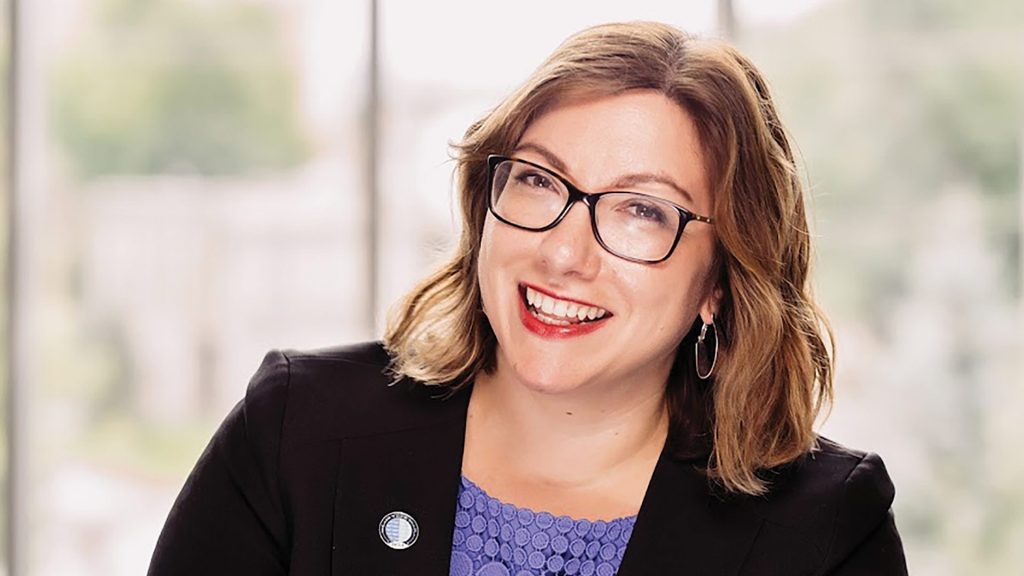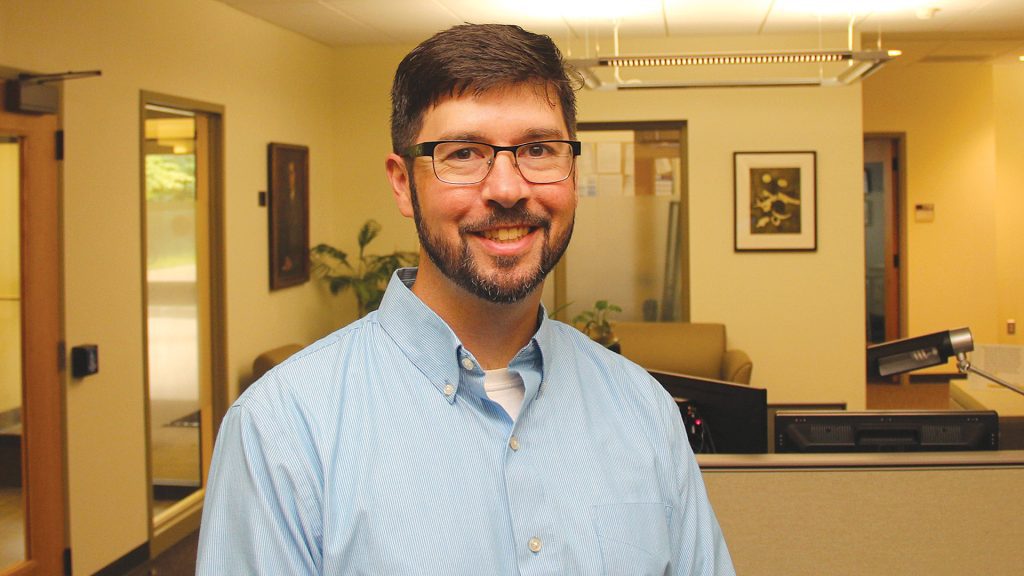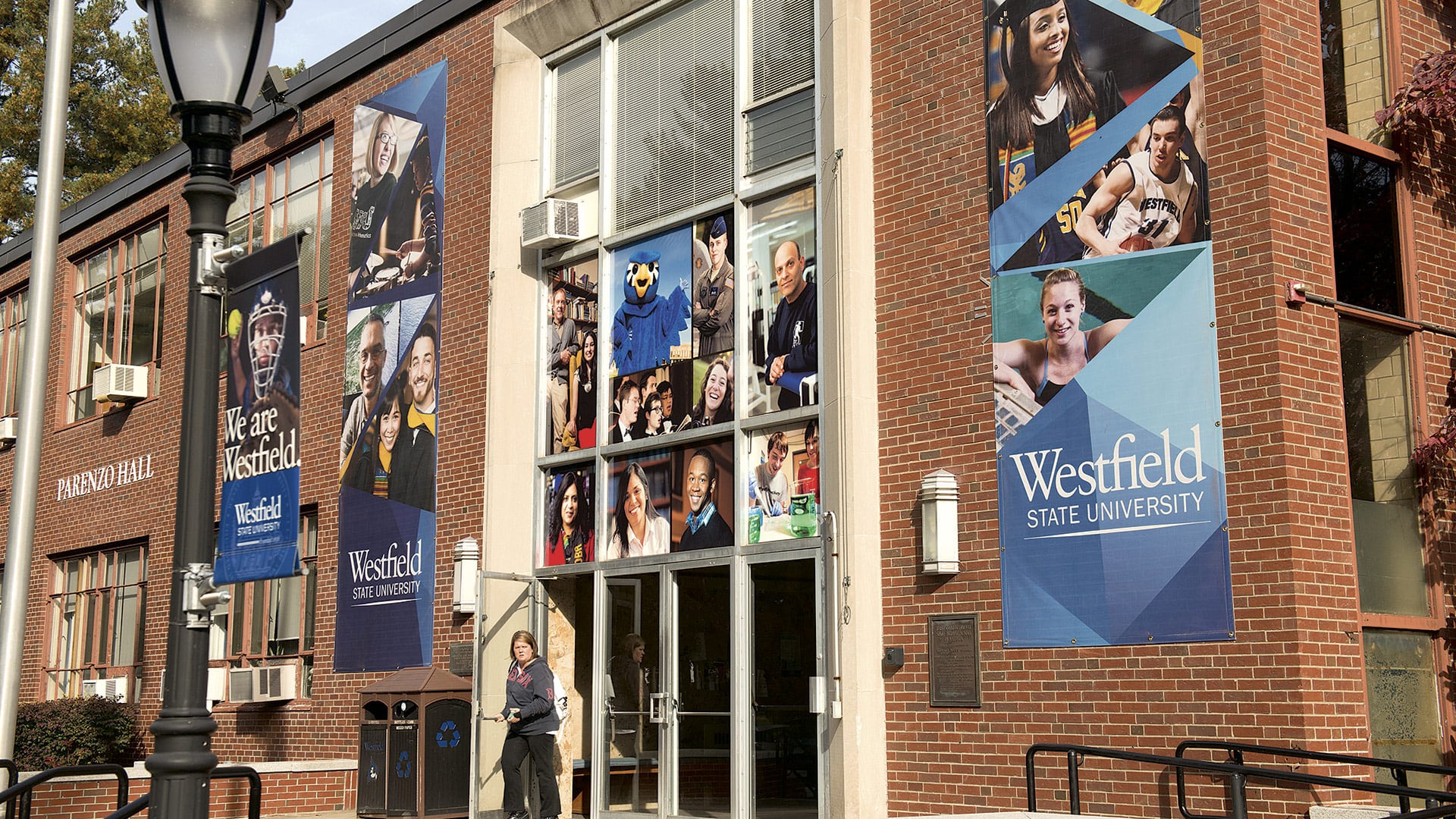Taking Themselves More Seriously

Izabella Martinez
At first, Izabella Martinez said, she was somewhat intimidated by the prospect of taking college courses when she was only a freshman in high school.
But then, when she got into it, that apprehension soon melted away and was replaced by a host of emotions and feelings, but mostly pride in accomplishment in taking, and doing well in, courses such as Introduction to Computer Technology, English 101, Art, Philosophy, Public Speaking, and what she considers her favorite thus far — College Writing.
“The teacher gave us a lot of freedom to write about what we felt passionate about,” said Martinez, a student at Discovery Early College High School in Springfield, a unique learning center that opened its doors in 2021. “I was able to improve my writing skills while also having creative freedom.”
Martinez believes she’ll have at least 24 college credits by the end of her sophomore year at Discovery. But she’ll have much more than that. She’ll have a higher level of confidence and perhaps something even more important — higher aspirations when it comes to her career and what’s doable, and the wherewithal to get to where she wants to go.
“One thing that we continued to struggle with was the number of people attending college and who were on a path to a living wage. The usual marker for success is graduation, and we were ringing that bell. But we weren’t seeing students entering into high-paying positions right after college, or who were pursuing college, in the way we wanted.”
And this, is a nutshell, is what Discovery High School (DHS), part of the Springfield Empowerment Zone Partnership (SEZP) — an independently governed nonprofit established in 2015 as a collaboration between Springfield Public Schools, the Massachusetts Department of Elementary and Secondary Education, and the Springfield Education Assoc. — is all about.
It uses what’s called a ‘wall-to-wall’ model to build viable future career pathways for students by enabling them to take college classes while in high school — and perhaps even earn an associate degree by the time they graduate — without having to pay for the college courses.
As he talked about the school, why it was created, and its overall mission, Matt Brunell, co-executive director of the SEZP, said the inspiration came in the form of statistics showing that, while Springfield’s high-school graduation rates were improving, the number of students going to college, and succeeding there, were not growing.
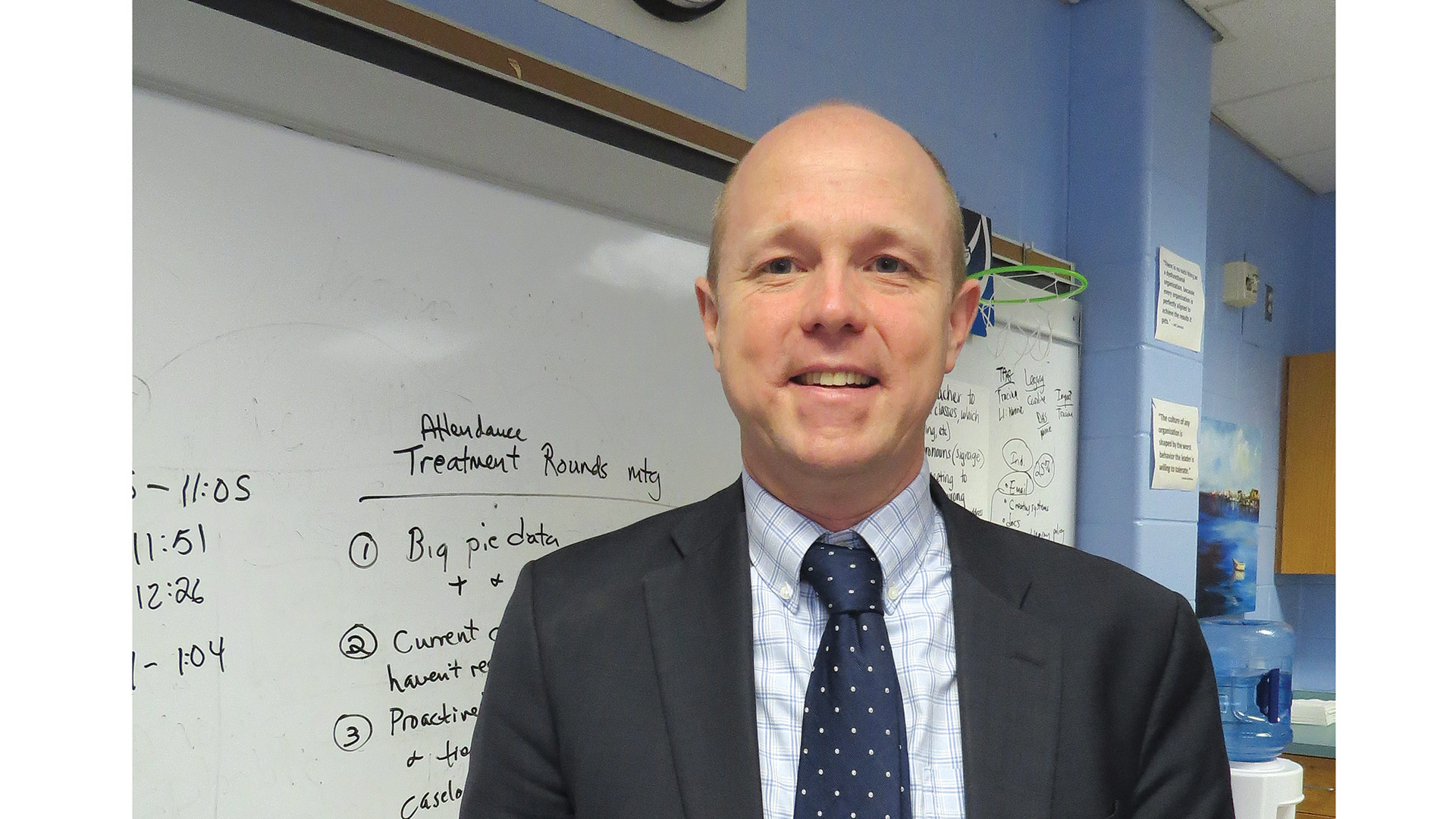
Matt Brunell says Discovery High School was designed to propel students to achieve a living wage within four years of graduation.
“One thing that we continued to struggle with was the number of people attending college and who were on a path to a living wage,” he explained. “The usual marker for success is graduation, and we were ringing that bell. But we weren’t seeing students entering into high-paying positions right after college, or who were pursuing college, in the way we wanted.”
“Three years ago, we took a hard look at industry and labor trends in the area, and we looked at which businesses were going to be growing over the course of the next several years,” he went on. “And we thought differently about a high-school model that would project and send students on that path to a living wage.”
Elaborating, he noted that DHS was designed to propel students to achieve a living wage within four years of high-school graduation. It does this by providing academic pathways that focus on high-demand careers in technology, computer science, engineering, and teaching.
But mostly it does this by inspiring students to “take themselves seriously.”
There are quotation marks around those words because all those we spoke with at DHS used them early and often.
“What she’s developed is an identity around college, and it’s really sticky.”
Especially Declan O’Connor, executive principal of Discovery, who referenced one student who will have amassed 24 college credits by the end of her sophomore year.
“What she’s developed is an identity around college, and it’s really sticky,” he told BusinessWest. “Kids are just starting to understand that this is real, and they’re looking toward their future, and they’re taking themselves seriously.”
Farrika Turner, assistant principal at Discovery, agreed.
“We’re really excited to see our Black and Brown students not be afraid of college, for their families not to be afraid of college and whether it will be attainable for them, to see parents become interested in returning to college and maybe take some of the classes that their children are taking,” she said. “And to have students see themselves as a college student, not as a high-school student that’s taking a course or two here and there that doesn’t add up to anything — they’re working toward the degree they’re interested in after high school.”
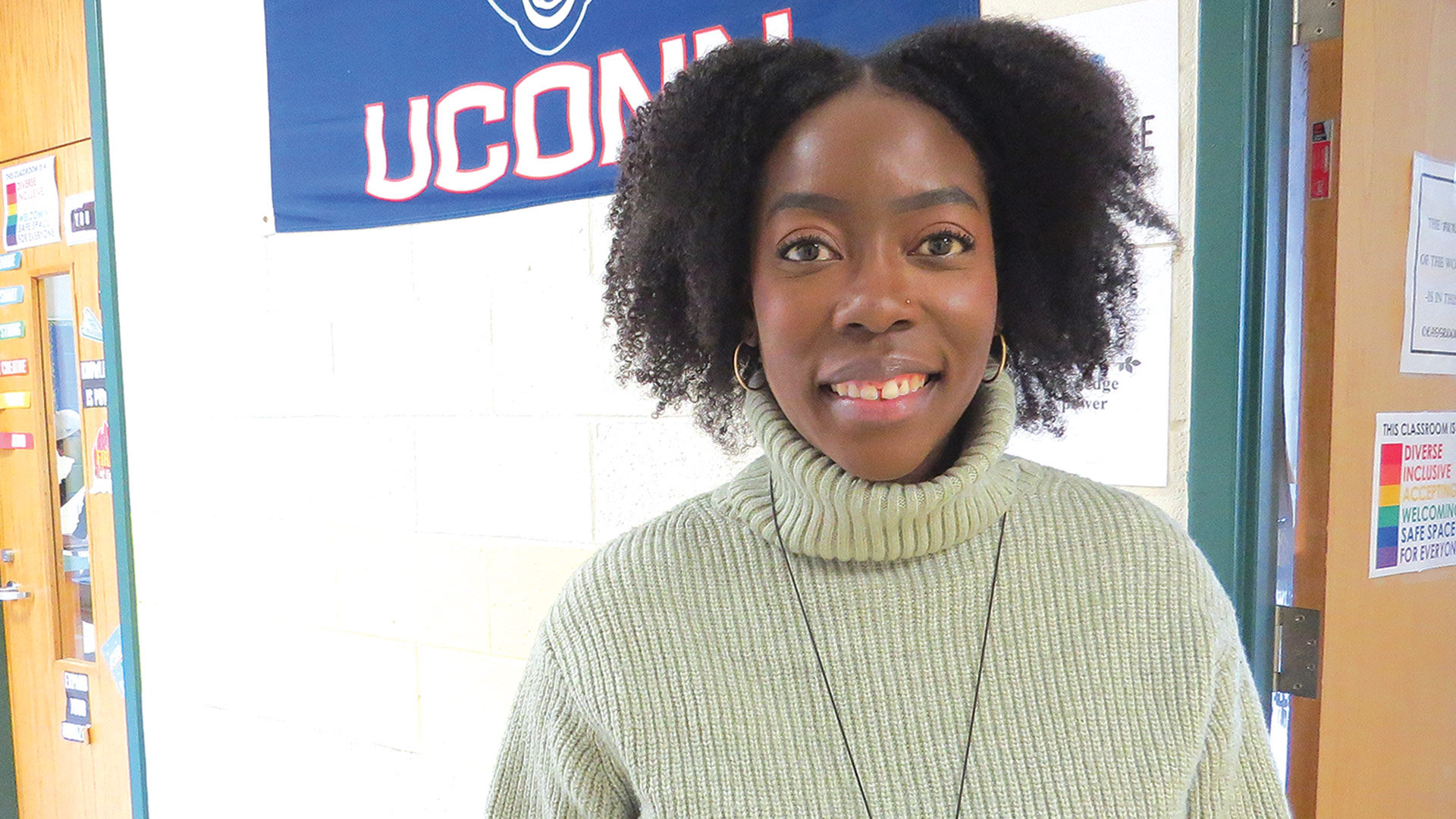
Farrika Turner says students at Discovery High are taking themselves, and their prospects for future employment, more seriously.
It will be another two years before DHS graduates a class of students. And it will be several years before those involved can compile real data on the outcome of students. But those we talked with said the early-college model is demonstrating promising results in many settings. Meanwhile, they say it is not too early to say it is succeeding at Discovery — at least when it comes to the very unofficial mission of getting students to take themselves more seriously.
Course of Action
As he led BusinessWest on a tour of DHS, O’Connor stopped in one classroom where students were learning how to create a circuit and, ultimately, a very small-scale solar panel, and in another, an Introduction to Digital Media class was ongoing where students were getting their pictures taken and compiling information to create their ‘digital brand.’
As inspiration, they were using a brand created by Ruth Carter, the costume designer from Springfield who has won two Oscars for her work on the Black Panther film franchise.
These are not college courses, he explained, but they are solid examples of how students at the school learn by doing, work together, and gain resolve by creating solutions and solving problems.
And this is what Brunell and others had in mind when they conceptualized this relatively new kind of high school.
“We’re really excited to see our Black and Brown students not be afraid of college, for their families not to be afraid of college and whether it will be attainable for them, to see parents become interested in returning to college and maybe take some of the classes that their children are taking.”
“We wanted to create a very small high school where kids were known, where they were cared for and loved during their time here, and where they could get really personalized attention and see themselves in careers that have been under-represented by Black and Brown folks in this community,” he said.
“Discovery High School is our attempt to take a really critical look at the STEM industries and to get students on a stronger pathway to those jobs,” he went on, adding that the Empowerment Zone board ultimately authorized the school in the spring of 2021, and it opened its doors that fall.
The school has open enrollment and is open to all students, said O’Connor, adding that there is no selection process. Overall, the school boasts a diverse population and draws from across the city. These students represent all levels of academic achievement as well.
“The child who chooses us … they know we are and what we’re about,” he explained. “They choose us mostly because they’re invested in our STEM pathways; they like to game, they like computers, they’re interested in engineering — or at least they think they are — and a lot of our students are those who traditionally didn’t do well in school, but have a big curiosity about technology.”
Now boasting 120 students, with plans to expand to 90 students per grade, DHS, as noted earlier, operates under the Early College model, which, as that name suggests, introduces students to college classes while they are high school. This not only gives them a solid head start when they get to college, said Declan, but it gives them that confidence and pride in accomplishment that Martinez spoke of.
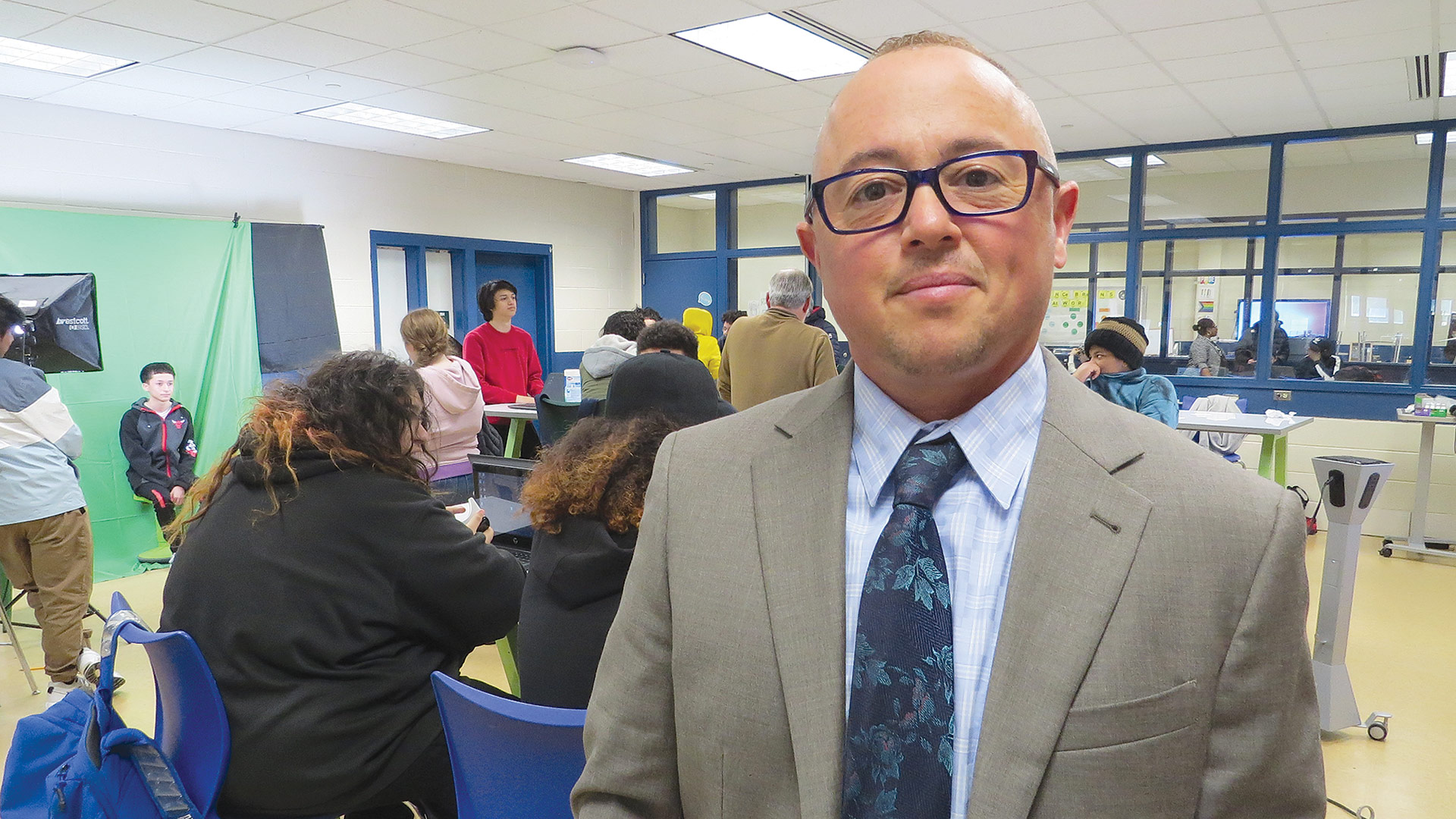
Declan O’Connor, principal of Discovery High School, says students there “gain an identity” by taking college classes.
O’Connor said every student at the school can take college classes, and most of them do, with DHS working in partnership with Holyoke Community College, Springfield Technical Community College, Worcester State University, and Quinsigamond Community College in Worcester. Classes take place at Discovery, online, and on the Quinsigamond campus.
As they take them, they are provided with plenty of support, he noted, adding this is an essential ingredient in this success formula, because they are real college classes, something he needed to be assured about himself.
“When I first started this and as I was learning about early college, I asked, ‘are these real college classes, or are they watered-down college classes that are a version for high-school kids?’” he recalled. “And Worcester State sternly said, ‘these are the same college classes.’ So the expectations didn’t change, but what had to be put in place was just a lot of supports for students.”
And what he’s learned over the past 20 months or so is that the students can handle these classes, academically; it’s the other aspects of that challenge, as they are for actual college students, that prove to be the bigger hurdle.
“These students didn’t have trouble doing the work,” he explained. “The challenge was more just ‘teenager stuff’ — following through, doing your homework, and submitting your assignments. Some of the students will say some of the classes they will take in the colleges are easier than 10th-grade English class.
“It’s really cool to see the shift from when they entered high school — to go from being scared and wondering, ‘what am I going to do with my life?’ to start future-planning and talking about their future in ways that make sense, and the feeling ‘I’m going to make some good money.’”
“A lot of it was just executive functioning,” he went on. “But when it came to the actual content of the classes, they were just fine because what we know about all of our kids is that, cognitively, they all have the capacity to learn.”
Learning Experiences
The learning at DHS has a stated purpose, said all those we spoke with — to put students on a path to not just a high-school diploma, but that living wage Brunell spoke of.
And this goes back to that notion of the students taking themselves seriously, an undertaking that comes with that confidence gained from taking those college classes, thus making students more ready not only for their actual college experience, but what can come after it.
“Early college for these students is an identity thing,” he explained. “They develop an identity around going to college, and there’s a lot of demystifying of going to college that happens along the way — they no longer have to wonder what college is like. Maybe they’re the first generation in their family to go to college, and in their freshman year, they can break down that psychological barrier of going to college.”
This ability to establish such an identity is one of the ways the faculty and administrators at Discovery are measuring success, more than two full years before anyone is handed a diploma or earns enrollment at a college or university.
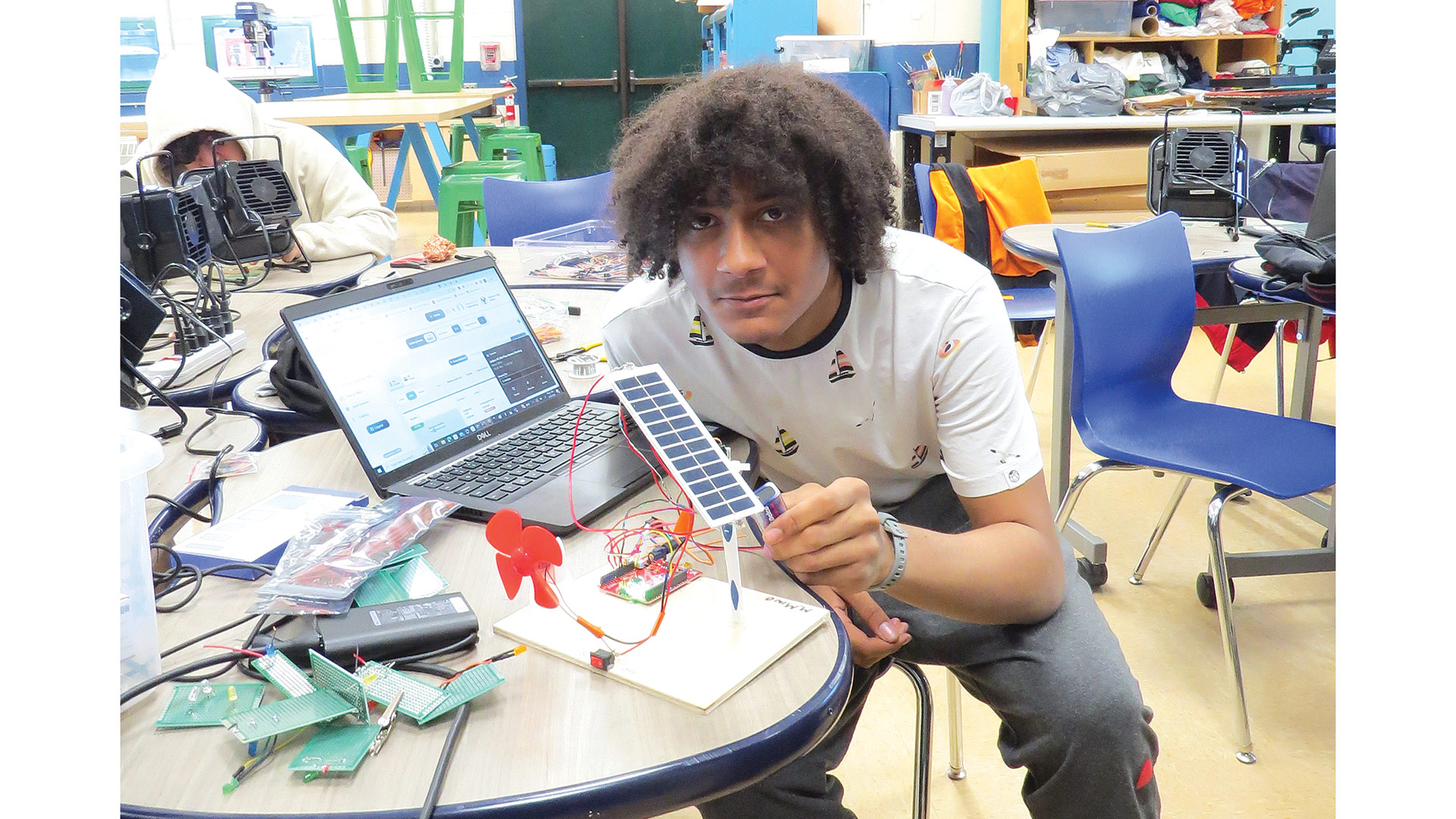
Students at Discovery High participate in a project to create a circuit, one of many examples of hands-on learning at the school.
“When the Empowerment Zone surveyed the schools in the entire country that were getting the strongest results for kids, the most predictive quality of the schools that were propelling kids to earn a living wage was whether or not kids were taking college classes in high school,” Brunell said. “It is far more predictive of college matriculation, of college success, of college achievement, of getting the diploma. If they can, during their high school years, actually spend the time in college-level classes and see themselves as being able to take those classes … this is the biggest element for us.”
Brunell said the state recently started compiling data on the salaries earned by the graduates of specific high schools. Looking out five years or so, he projects this data will show that DHS students are faring better than those in high school with more traditional models.
“We see this as the benchmark for whether or not the school is a success,” he said. “When we look at the average number of college credits earned by freshman and sophomores at Discovery High School, we’re incredibly enthused — this is a leading indicator that the school is on the right track.”
Elaborating, he said there will be several ‘winners’ to emerge from the creation of DHS and schools like it, starting with the students, who can earn up to 60 college credits and, as noted, perhaps even a degree in high school, without having to go into debt (those costs are absorbed by the school’s general-fund budget or philanthropy from groups such as the Barr Foundation and New Schools Venture Fund, as well as, locally, the Davis Foundation).
Other winners are the participating colleges, who gain enrollment, revenue, and, in some cases, future students, as well as area employers, especially those in technology-related fields, who are struggling, as other sectors are, to attract and retain qualified talent.
Another indicator of early success at DHS is the level of confidence exuded by students like Izabella Martinez, said Turner, noting that she and others can see this confidence build and reflect itself in how students see themselves and talk about the future.
“It’s really cool to see the shift from when they entered high school — to go from being scared and wondering, ‘what am I going to do with my life?’ to start future-planning and talking about their future in ways that make sense, and the feeling ‘I’m going to make some good money.’
“We see students come in and say, ‘I just want to graduate from high school, get a job, and help my family,’” she went on. “Now they’re understanding that they don’t have get a job at Geek Squad at Best Buy — ‘I can be a programmer; I can use my skills to go in the military and work in cybersecurity.’ It’s really cool to see that change, that mind shift.”
That’s what happens when young people start to take themselves, and their futures, more seriously.








